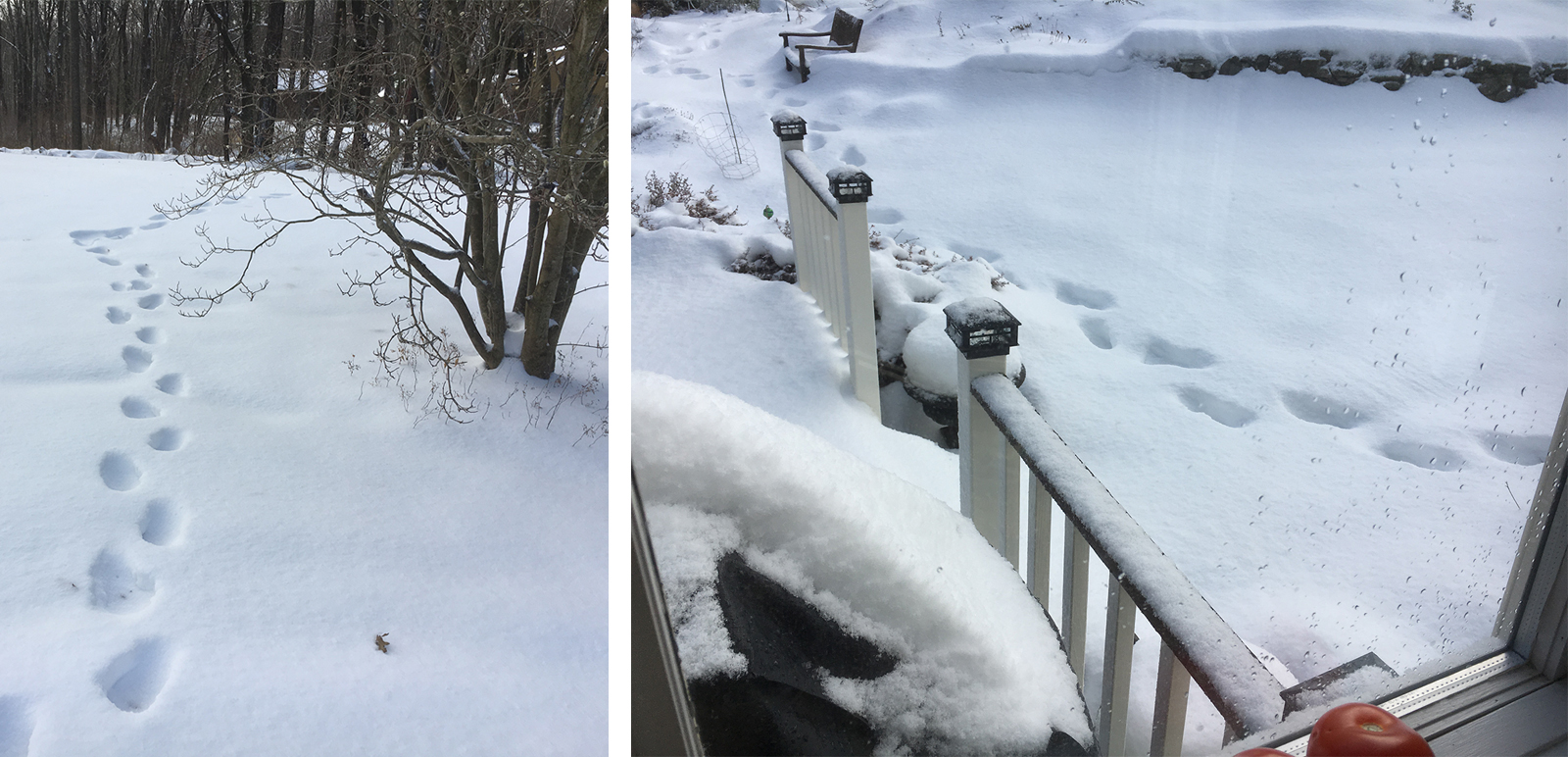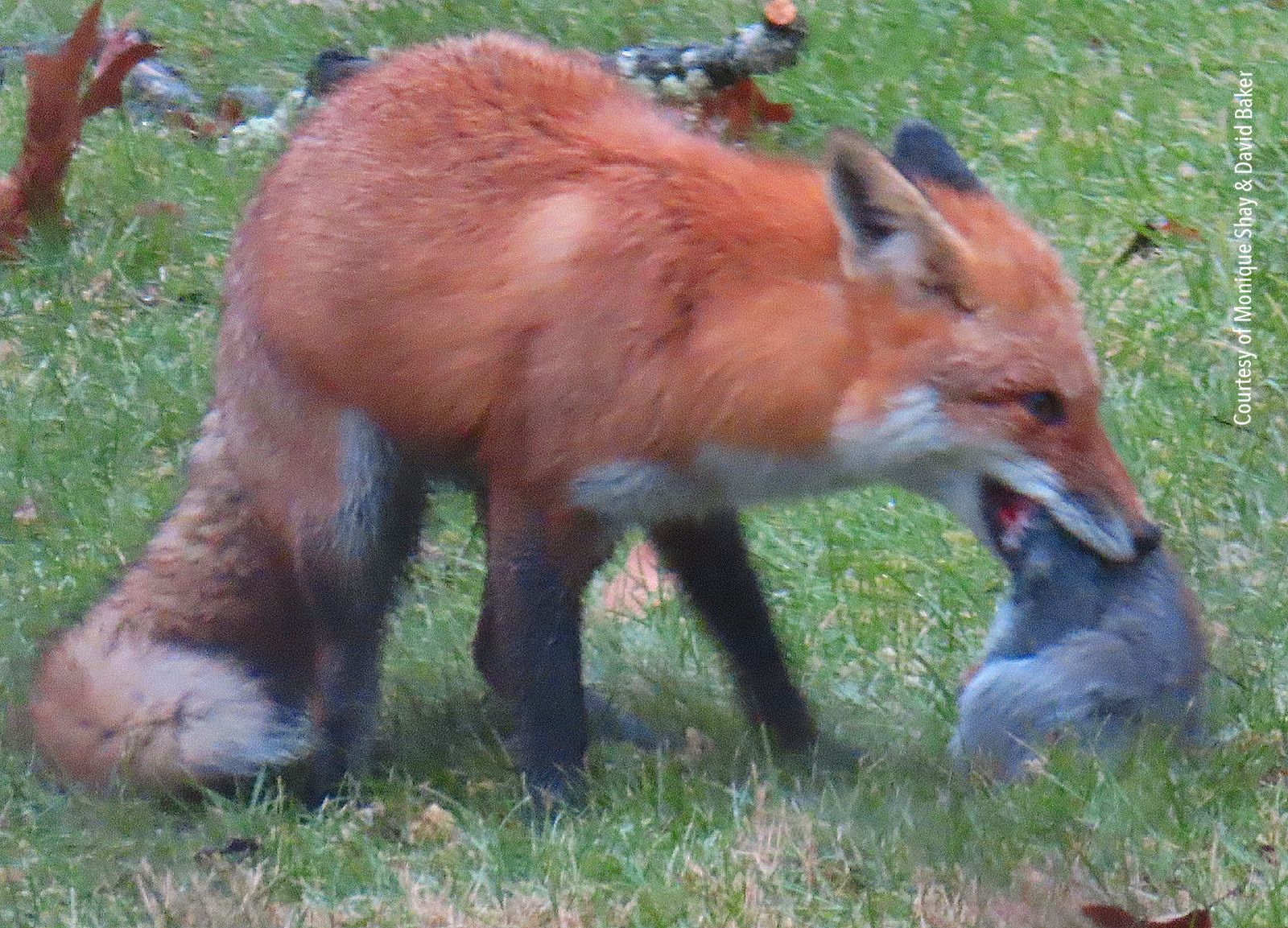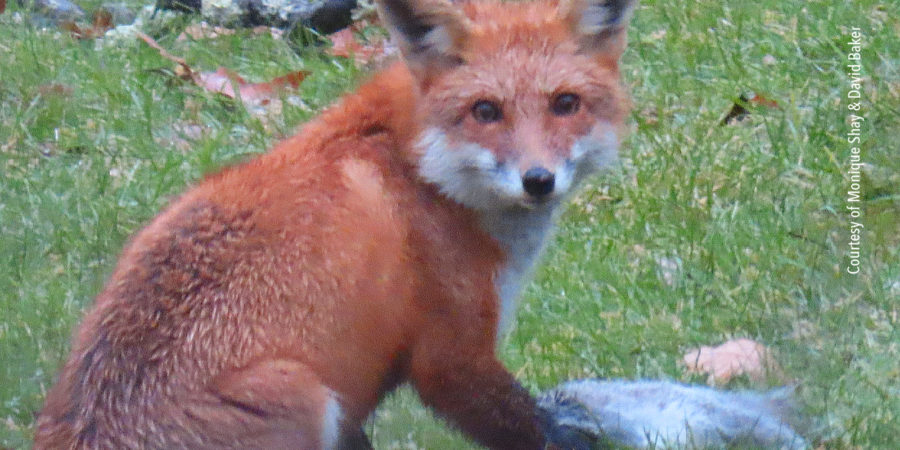As I picked up the morning paper at the end of our driveway, I turned to look at a deer that had been killed by a car, when two eyes met mine from atop the carcass. A full grown Bobcat, about the size of a Labrador Retriever, sat crouched on the deer, motionless, waiting for me to make a move. My move, of course, was to pull out my cell phone to get an image of this beautiful cat. As soon as I did, it bolted into the woods and onto a stone wall. At the same time a smaller Bobcat, feeding on the backend of the deer, ran into the woods behind the stone wall. The larger cat sat on the wall, very purposefully in plain view between the smaller cat me. I guessed this was the male keeping himself between me and its mate. The cats stayed all afternoon feeding on the deer. For days afterward, the carcass became steadily smaller and pulled further into the woods. It took about ten days for the deer to disappear with only the hide (licked clean of tissue), a jaw bone and a couple of rib bones remaining.
I’ve always admired and been fascinated by predators. Their ability to hunt and provide food for themselves and their young throughout the seasons is remarkable. Each day is a fight for survival. From snakes to spiders, raptors to weasels, and canines to Bobcats, these wild creatures that live among us must be successful hunters or face starvation and death.
FACT: When it comes to eating, Bobcats tend to target rabbits, woodchucks, squirrels, chipmunks, mice, white-tailed deer and birds. To a much lesser extent, they’re also known to eat insects and reptiles.
Connecticut DEEP
Rarely can we see the stealthy Bobcat hunting. Seeing a pair feeding is a very rare sight in itself. More often it’s insects, arachnids and birds that we get the opportunity to view hunters in action. Patience is the overriding similarity to all of these species success in capturing prey. The Great Blue Herons slowly wading in the shallows, standing motionless until they dart their heads into the water to snatch a fish, frog or other unsuspecting animal. The Red-Shouldered and Red-Tailed Hawks, waiting patiently on low branches, turning their heads in almost 180 degrees, looking for the slightest movement in the leaf-covered ground below. Unlike these two buteos, the Coopers Hawk (an accipiter) takes prey in the air as well as on the ground. I’ve seen songbirds scatter from a feeder and a Coopers Hawk quickly swoop in to catch a bird that couldn’t quite make it to the safety of a nearby bush. I’ve watched a Coopers Hawk land on the ground and, dragon-like, walk under a shrub looking up to see if it could surprise a hiding bird.

The predator versus prey scenario plays out constantly in our yards — in the trees, on the ground and below ground. The Black Rat Snake goes into Chipmunk holes looking to capture a meal. It can also climb up trees to raid bird and squirrel nests. Years ago, a group from the Bent of the River Audubon Center in town was filming a Blake Rat Snake scaling a large pine tree towards a Gray Squirrel nest. Suddenly, the snake was disappeared from the view finder. When the videographer looked from behind the camera he saw a Red-Tailed Hawk flying away with the snake. The predator had become the prey.
A Black Bear killed a neighbor’s goat last winter. Black Bears feed on roots, berries and grasses but will take an animal when it can. Last month during the first snow of the season a bear left its tracks in the snow shortly after I shoveled the front walk and stairs in the morning. We’ve seen bear several times over the past two years, but they seem to keep to themselves. This bear left tracks leading across the front yard, up to the deck, over the patio and out into the woods. We were disappointed we didn’t see it but excited that it made it’s way through our yard.

We don’t see Red Fox in our yard very often. I know they’re around by their tracks in the snow. Both my brother in Northern Virginia and a friend from a neighboring town see Red Fox in their yards often. A pair raise their young annually under a shed providing them with a day-by-day view of the pups playing, feeding and discovering throughout the summer. Gray Squirrels are a favorite of these predators. Recently, a Red Fox caught and devoured a Gray Squirrel in the middle of their lawn, glancing over at the window from time to time to make certain none of the humans would not steal its quarry.
It’s always a bit sad to see an animal caught, killed and eaten. The cycle of life in the wild is brutal and unforgiving. But it’s been that way since the time of dinosaurs and will certainly never change. The demands and pressures on the predators to be successful hunters are equal to the prey’s never-ending task of escaping the jaws, talons and beaks that are in pursuit. Let’s give the predators the respect and admiration they deserve.
OBSERVATION: We’ve seen three different Black Bears in our yard over the past year. Having no bird feeders on our property they meander through fairly quickly, moving on to the next yard in the hope of an easy hanging snack.
